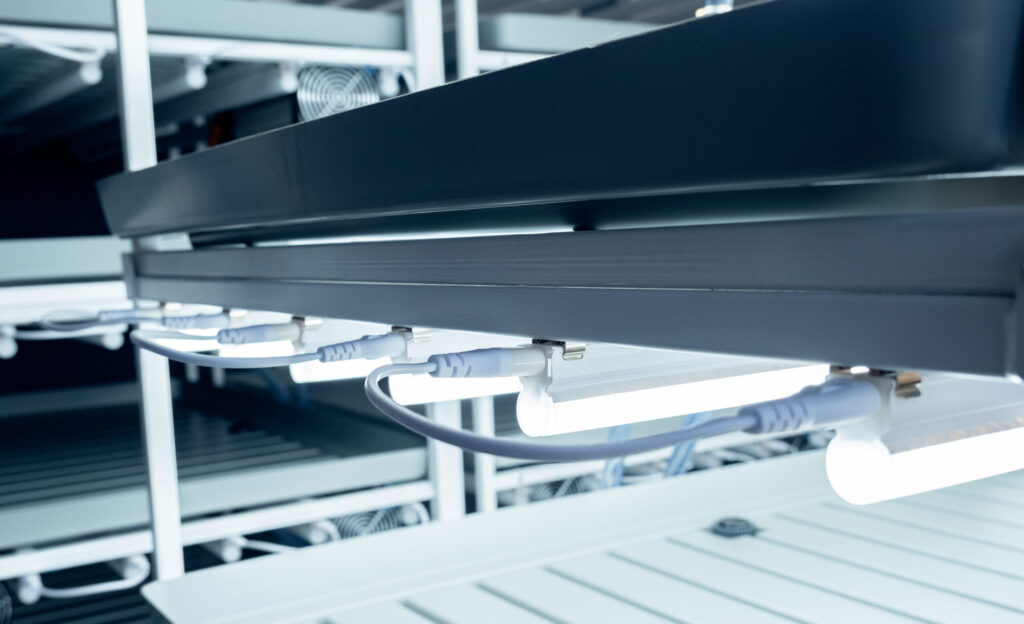Innovations in agriculture have paved the way for sustainable and efficient methods of food production. One such technique is hydroponics, a soilless cultivation method that maximizes resource utilization while minimizing environmental impact. Microgreens, the tiny, nutrient-packed plants bursting with flavor and vibrant colors, have gained immense popularity in recent years. Now, imagine the combination of hydroponics and microgreens grown in unconventional spaces such as bunkers. In this blog post, we delve into the fascinating world of cultivating microgreens in bunkers using hydroponic techniques, highlighting the benefits and potential of this unique approach.
The Potential of Bunkers:
Bunkers, once associated with wartime shelters, are finding new purpose in agriculture. These underground structures offer several advantages for cultivating microgreens with hydroponics. Bunkers provide a controlled environment shielded from external factors such as extreme weather conditions and pests, offering year-round production possibilities. Their insulated nature also contributes to energy efficiency, reducing the need for excessive heating or cooling.
Adaptability and Flexibility:
Hydroponics provides remarkable adaptability, and bunkers offer an additional layer of flexibility. By harnessing hydroponic systems tailored to microgreens, growers can optimize factors like water circulation, nutrient delivery, and lighting. Bunkers can be designed to accommodate multiple layers of cultivation, utilizing vertical space efficiently. This vertical farming approach maximizes the yield per square foot, making it suitable for urban areas with limited land availability.
Nutritional Superiority:
Microgreens are known for their exceptional nutritional value, often containing higher levels of vitamins, minerals, and antioxidants compared to their mature counterparts. When grown hydroponically, microgreens can benefit from a precisely controlled nutrient solution, ensuring optimal growth and nutrient absorption. The controlled environment of a bunker also eliminates the risk of soil contaminants, providing a clean and healthy growing medium for these delicate greens.
Sustainable Food Production:
The combination of hydroponics and bunkers creates a sustainable system with minimal environmental impact. Hydroponics uses up to 90% less water compared to conventional farming, making it a water-efficient method. Bunkers, with their insulated structure, reduce the need for artificial heating or cooling, further conserving energy resources. By embracing this technique, growers can contribute to sustainable food production and reduce the strain on traditional agricultural practices.
The marriage of hydroponics and bunkers provides a promising path for cultivating microgreens. The controlled environment of bunkers ensures optimum growth and protection against external factors, while hydroponic systems offer precise nutrient management and efficient resource utilization. The resulting sustainable and high-yield production of microgreens meets the growing market demand for these nutritional powerhouses.
In conclusion, cultivating microgreens in bunkers using hydroponic techniques opens new opportunities in the field of food production. This innovative combination of unconventional spaces and sustainable methods demonstrates that agriculture can be adapted and optimized in creative ways. Microgreens grown in bunkers benefit from a controlled and optimized environment, offering both culinary satisfaction and nutritional value. Surely, this field will continue to evolve and bring innovations that will transform the way we nourish ourselves.
We look forward to seeing how the microgreens in bunkers industry will continue to grow and bring benefits to consumers and the environment simultaneously.


